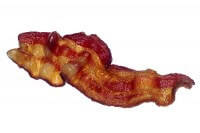 Those of us concerned about the humane treatment of the animals we eat should read Tamar Haspel’s story in the Washington Post. Tamar and her husband Kevin are raising their own pigs for eventual slaughter—the pigs are named Spot, Doc, and Tiny. They can be seen on a “stycam” frolicking about. But as a result of the Haspels’ up-close-and-personal caring for them, the livestock have become pets. As the day of slaughter approaches, tensions mount. But the Haspels are sticking to the plan.
Those of us concerned about the humane treatment of the animals we eat should read Tamar Haspel’s story in the Washington Post. Tamar and her husband Kevin are raising their own pigs for eventual slaughter—the pigs are named Spot, Doc, and Tiny. They can be seen on a “stycam” frolicking about. But as a result of the Haspels’ up-close-and-personal caring for them, the livestock have become pets. As the day of slaughter approaches, tensions mount. But the Haspels are sticking to the plan.
As Tamar explains,
You can’t know for sure what it’s like to raise an animal until you actually do it. While we knew, from the beginning, that feelings would be engaged, we had no idea exactly which feelings those would be. But we were determined that, no matter how petlike the pigs turned out to be, we would kill them and eat them.
Doing otherwise would be an inexcusable capitulation to sentiment. Is it really better to keep three pets that will keep eating—and growing—until, together, they weigh as much as a car? What’s the endgame there?
We also don’t know how we’re going to feel about cooking and eating pork that had a name. The meat from one of these pigs is going in our freezer; we’re raising the other two for friends. It will be a new experience for us when the answer to “what’s for dinner?” might be “Spot chops.”
There, we have an out. If we found it distasteful, we could give the pork away. But that would defeat the purpose of the enterprise, which is to ensure that the food we eat has a decent life.
And there’s the rub. If you’re committed to humanely raised pork, you’re committed to eating a charming animal. Kevin and I are absolutely committed.